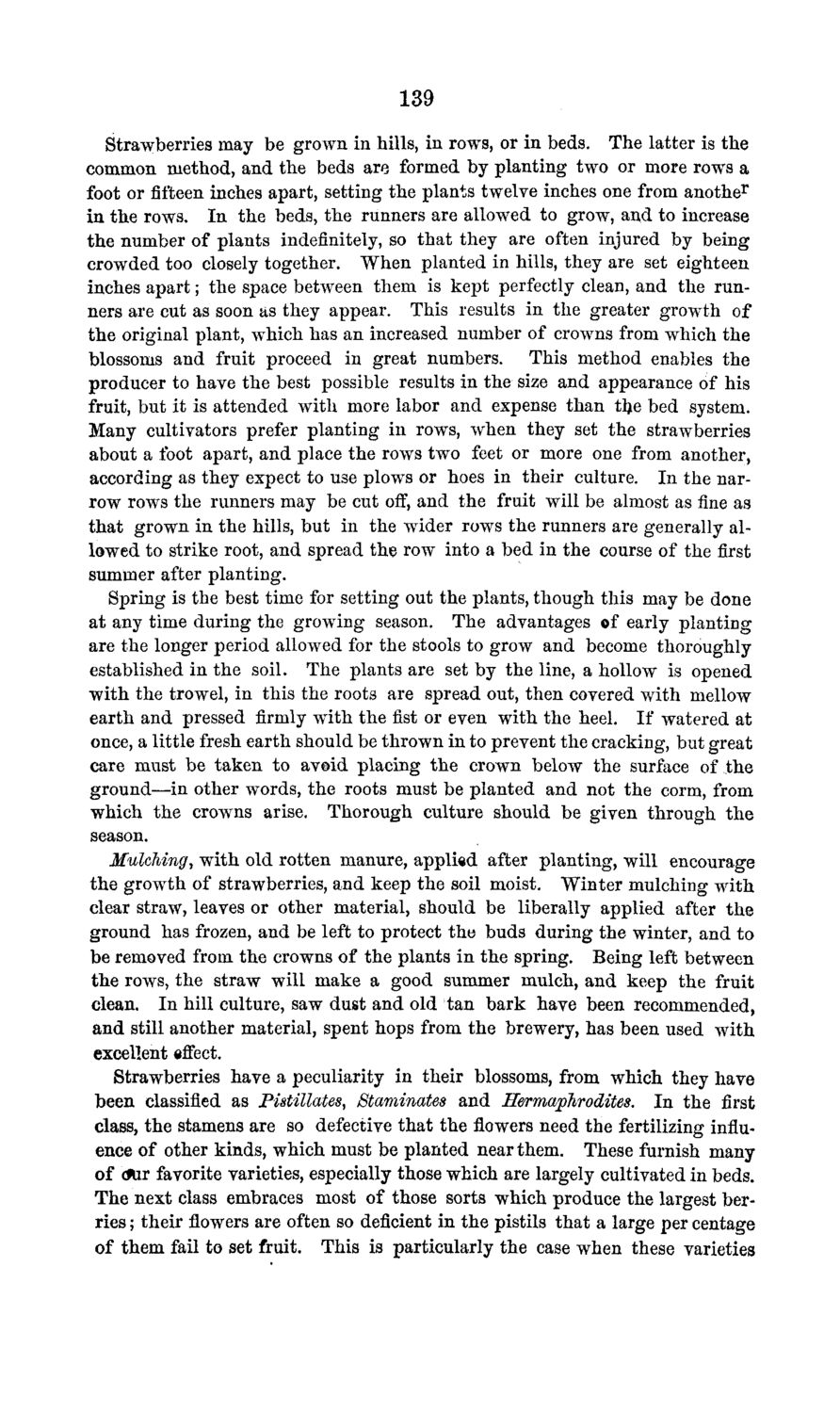| |
| |
Caption: Board of Trustees Minutes - 1869
This is a reduced-resolution page image for fast online browsing.

EXTRACTED TEXT FROM PAGE:
139 Strawberries may be grown in hills, in rows, or in beds. The latter is the common method, and the beds are formed by planting two or more rows a foot or fifteen inches apart, setting the plants twelve inches one from anothe r in the rows. In the beds, the runners are allowed to grow, and to increase the number of plants indefinitely, so that they are often injured by being crowded too closely together. When planted in hills, they are set eighteen inches apart; the space between them is kept perfectly clean, and the runners are cut as soon as they appear. This results in the greater growth of the original plant, which has an increased number of crowns from which the blossoms and fruit proceed in great numbers. This method enables the producer to have the best possible results in the size and appearance of his fruit, but it is attended with more labor and expense than tlje bed system. Many cultivators prefer planting in rows, when they set the strawberries about a foot apart, and place the rows two feet or more one from another, according as they expect to use plows or hoes in their culture. In the narrow rows the runners may be cut off, and the fruit will be almost as fine as that grown in the hills, but in the wider rows the runners are generally allowed to strike root, and spread the row into a bed in the course of the first summer after planting. Spring is the best time for setting out the plants, though this may be done at any time during the growing season. The advantages of early plantiug are the longer period allowed for the stools to grow and become thoroughly established in the soil. The plants are set by the line, a hollow is opened with the trowel, in this the roots are spread out, then covered with mellow earth and pressed firmly with the fist or even with the heel. If watered at once, a little fresh earth should be thrown in to prevent the cracking, but great care must be taken to avoid placing the crown below the surface of the ground—in other words, the roots must be planted and not the corm, from which the crowns arise. Thorough culture should be given through the season. Mulching, with old rotten manure, applied after planting, will encourage the growth of strawberries, and keep the soil moist. Winter mulching with clear straw, leaves or other material, should be liberally applied after the ground has frozen, and be left to protect the buds during the winter, and to be removed from the crowns of the plants in the spring. Being left between the rows, the straw will make a good summer mulch, and keep the fruit clean. In hill culture, saw dust and old tan bark have been recommended, and still another material, spent hops from the brewery, has been used with excellent effect. Strawberries have a peculiarity in their blossoms, from which they have been classified as Pistillates, Staminates and Hermaphrodites. In the first class, the stamens are so defective that the flowers need the fertilizing influence of other kinds, which must be planted near them. These furnish many of <fur favorite varieties, especially those which are largely cultivated in beds. The next class embraces most of those sorts which produce the largest berries ; their flowers are often so deficient in the pistils that a large per centage of them fail to set fruit. This is particularly the case when these varieties
| |